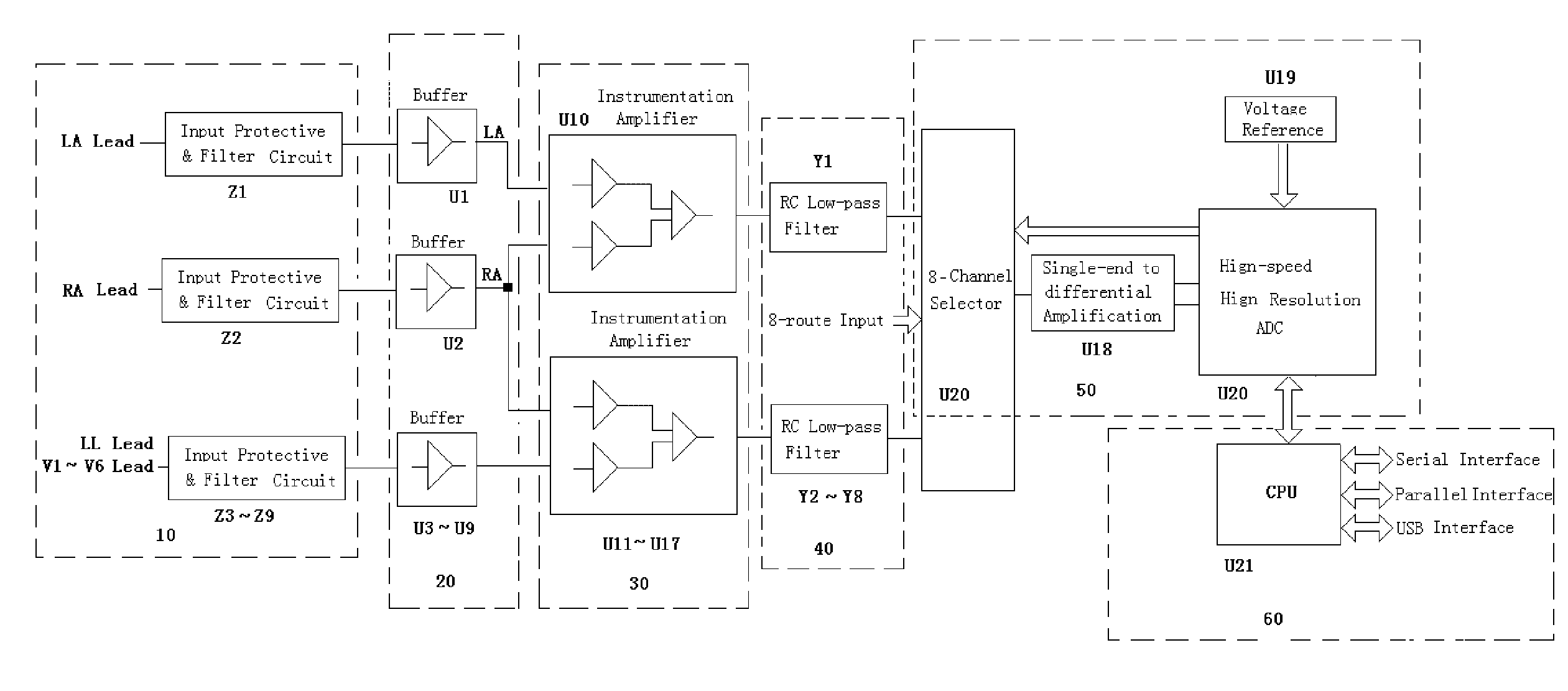Type of High-Performance DC Amplification Device for Bioelectrical Signal Collection
a bioelectrical signal and dc amplification technology, applied in the field of electrochemical detection technology, can solve the problems of more parts applied, high interference voltage, and difficult to obtain neat bioelectrical signals accurately and quickly, and achieve the effects of simple design of bioelectrical front-end circuits, moderate production costs, and high performan
- Summary
- Abstract
- Description
- Claims
- Application Information
AI Technical Summary
Benefits of technology
Problems solved by technology
Method used
Image
Examples
Embodiment Construction
[0028]This invention is further described on the basis of the attached figures as below: Shown as FIG. 1 and FIG. 2, the present invention involves in a type of high-performance DC amplification device for bioelectrical signal collection, which includes the input protective / filter circuit (10), input buffer circuit (20), instrumentation amplification circuit (30), RC low-pass filter circuit (40) and analog-digital conversion and peripheral circuit (50) and CPU (60), whereas the input protective / filter circuit (10) collects the bioelectrical signal and sends such signal to the input buffer circuit (20) and then allows it pass through the instrumentation amplification circuit (30), RC low-pass filter circuit (40) and analog-digital conversion and peripheral circuit (50) in order. The CPU (60) controls the operation of analog-digital conversion and peripheral circuit (50).
[0029]The input protective / filter circuit (10) has nine routes from Z1 to Z9 and each route is composed of a gas di...
PUM
 Login to View More
Login to View More Abstract
Description
Claims
Application Information
 Login to View More
Login to View More - R&D
- Intellectual Property
- Life Sciences
- Materials
- Tech Scout
- Unparalleled Data Quality
- Higher Quality Content
- 60% Fewer Hallucinations
Browse by: Latest US Patents, China's latest patents, Technical Efficacy Thesaurus, Application Domain, Technology Topic, Popular Technical Reports.
© 2025 PatSnap. All rights reserved.Legal|Privacy policy|Modern Slavery Act Transparency Statement|Sitemap|About US| Contact US: help@patsnap.com



